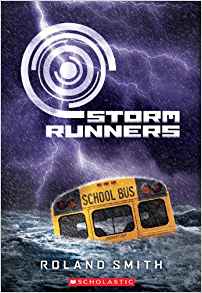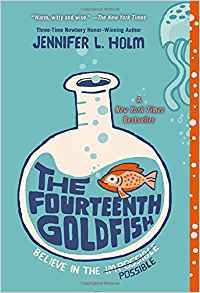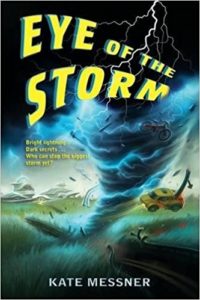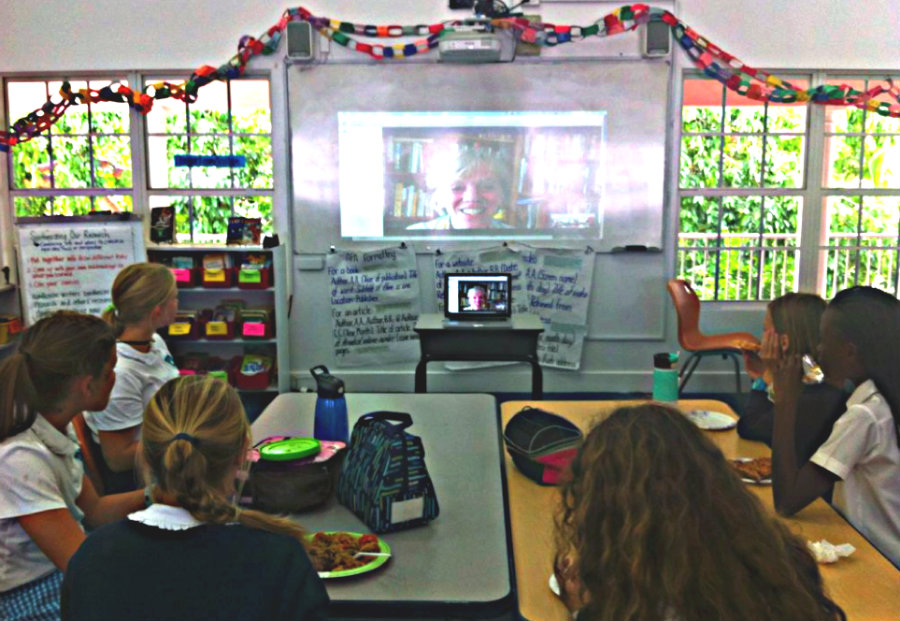STEM Fiction Can Help Energize ELA Classes
 By Megan Kelly
By Megan Kelly
With an increased emphasis on STEM (Science, Technology, Engineering, and Math) in schools nationwide, many language arts teachers are working to integrate with these disciplines.
As we know, there are countless STEM nonfiction titles and picture books that you can add to your classroom library, but teachers also have increasing options of fiction to share with their middle grades students. Fiction about STEM subjects allows students to make an emotional connection to characters while still learning facts.
Here are a few simple ways to integrate these novels into your class:
► Give frequent book talks on STEM novels and increase their visibility in the classroom library.
► If you have influence over the summer reading program, add as many STEM novels as you can.
► Lunchtime book clubs attract students who are genuinely enthusiastic about the topic and allow friends who are in different classes to read together.
► Set up literature circles with a variety of STEM novels. In my experience, students discuss their lit circle books outside of class and often end up reading the books assigned to other groups.
Interdisciplinary possibilities
Going a step further, ask the STEM teachers in your school to read the novel and refer to it in their lessons. Students love when their learning is connected, and units with interdisciplinary connections are fun and beneficial for teachers as well.

We all read Roland Smith’s Storm Runners and discussed how the book would have been different if it was set in The Bahamas. There was a waiting list to read the rest of the trilogy! Students were engaged because this memorable unit connected to their real lives and blurred the lines between subject areas.
Once you and your STEM ally have a shared novel, there is no end to the activities you can do together. A few possibilities:
► Model a respectful debate or a conversation about the novel. Students often don’t know how these discussions should look. A guest teacher might lead the chat – it’s always fun for them to have an unexpected visitor, e.g. the math or science teacher, in English class.
► Research the STEM ideas behind the novel and discuss if the author stayed true to these concepts.
► Write an additional scene for the novel using the STEM information they’ve learned in class.
► Read nonfiction articles that are tied to the STEM concepts in the novel. It’s important for students to read in their STEM classes and see that their nonfiction reading strategies transfer to other disciplines.
STEM novels for middle graders
Below are some novels that I have used in my classes, along with nonfiction articles that connect to the STEM topic:
The Fourteenth Goldfish by Jennifer L. Holm (genetics, scientific ethics)

Partner articles:
• Gene Editing
• The race to save the world’s great trees by cloning them
Cinder by Marissa Meyer (robotics)
The first in a series of fairy tale reboots, this is a retelling of Cinderella featuring a cyborg version of the heroine. Linh Cinder is the best mechanic in the futuristic city of New Beijing, toiling away to support her wicked guardian and her two stepsisters. When Prince Kai comes into her shop, asking her to repair his android, he sets off a series of events that change the fate of the entire planet.
Partner article:
• Making new “emotional” robots that can read human feelings
Eye of the Storm by Kate Messner (climatology)

Partner articles:
• Cyclones and climate change: connecting the dots
• Atlantic hurricanes are getting more dangerous, more quickly
Fuzzy Mud by Louis Sachar (biological engineering)
When Tamaya throws some mud in the woods at bully Chad, she thinks she is just trying to protect her friend. That’s before her skin starts blistering and bleeding, and before Chad loses his vision. That’s when the government gets involved, and things get really dangerous.
Partner article:
• Benefits and risks of biotechnology
Moonpenny Island by Tricia Springstubb (geology)
As the only eleven-year-olds on Moonpenny Island, Flor and Sylvie are lucky to have each other. When Sylvie is sent to school on the mainland, Flor thinks her world will fall apart. Then Flor meets a geologist who is on the island to study prehistoric trilobites, the first organisms to develop sight. She realizes that she must learn the ability to see things clearly, too. Ms. Springstubb was kind enough to do a Skype call with my book club students who read this novel.
Partner article: Earth’s Systems: Geologic time
Flush by Carl Hiaasen (marine ecology)
Noah’s father is an out of control eco-warrior who sinks a polluting casino boat belonging to Dusty Muleman. In this funny adventure, Noah, his sister, and a cocktail waitress named Shelley have to get proof that Dusty is the bad guy, while dodging bullies, strangers, and reporters. Carl Hiaasen has written numerous novels for middle grades readers, all with an environmental bent.
Partner article:
• What is environmental justice?
Megan Kelly has been an international middle grades social studies and ELA teacher since 2003, most recently in Singapore. She has a Master of Arts in Teaching and is passionate about literacy and learning through play. She tweets at @33megan33. Browse her many Wide Open Learning articles for teachers here at MiddleWeb.




































Code Orange by Caroline B. Coney is a good one about diseases and bioterrorism.